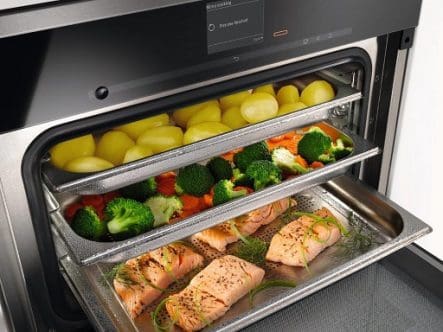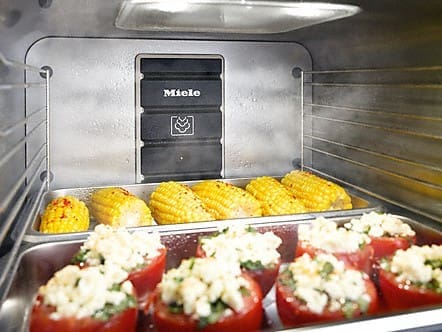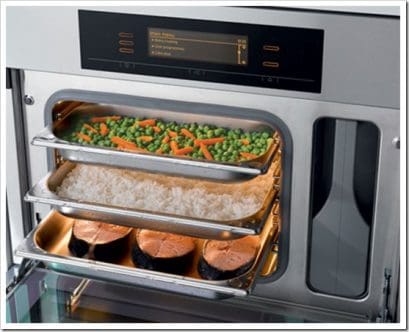What is Sous Vide Cooking?
Sous Vide (pronounced sue-veed) is a method of cooking that consists of three characteristics; the food being cooked without direct contact with its heat source, the use of vacuum sealing and cooking the food using a low temperature.
Sous Vide means ‘under vacuum’ in French and it begins with vacuum sealing the food in a special plastic bag. Professional chefs have raved about this method of cooking for years and you’ve possibly seen it used on Masterchef once or twice! Traditionally, the vacuum sealed food is then submerged into a water bath that is kept at a consistent low temperature throughout the cooking process. The precise control of the temperature is paramount in the success of Sous Vide cooking.


How Can I Sous Vide at Home?
Some of the leading appliance manufacturers have introduced Sous Vide ovens meaning that this type of cooking has become available to the home cook. Sous Vide ovens eliminate the need for costly and large industrial-style water baths. After the food is vacuum sealed, instead of dropping it into a water bath, it’s placed into the oven where the sous vide setting will use steam to mimic the consistent temperature of the water bath, ensuring the food is cooked evenly and perfectly every time.
How do I Vacuum Pack the Food?
You’ll need to purchase either a ‘stand-alone’ vacuum sealer (£60 – £100) or an integrated one, to be fitted along side your new oven (£1500 – £3000). The integrated ones are usually fitted below your oven and look very much like a warming drawer. The special plastic bags for vacuum sealing are readily available online, can be bought in varying sizes and cost as little as 10p each.
Which Foods can you Sous Vide?
Sous Vide is perfect for meat, fish or vegetables and can even be used to cook eggs and several types of desserts and sauces. Basically, as long as the food doesn’t require dry heat (i.e. baking) you can Sous Vide it. For savoury dishes, you can put the herbs, onions and garlic in the bag with the meat or fish before you vacuum seal it, allowing the flavours to infuse as it cooks.

What are the Benefits of Sous Vide Cooking?
Sous Vide cooking stops the food drying out, being over-done or unevenly cooked. Steak, for example, will be cooked perfectly with the same amount of ‘pinkness’ throughout which can then be browned in a pan afterwards, if required.
Sous Vide is a very healthy way to cook. Only a small amount of fat or salt needs to be added to the food as the natural flavours are already sealed in. The vitamins and minerals aren’t lost either, because of the vacuum sealing, so you retain all the nutrients and natural goodness.
How do I Check on the Food that’s Cooking?
Well, you can’t…but, you don’t need to! The ovens that are available with the Sous Vide cooking feature are pretty advanced and will take all the guess work out of cooking times. They allow you to select what you’re cooking and, when necessary, how you like it cooked (e.g. for steak – rare, medium or well done) and it will set the time for you – it really is fool-proof cooking.
Are Sous Vide Ovens Expensive and are they Worth it?
If you’re a keen cook, like to keep up with the Masterchef contestants and love a good steak, a Sous Vide oven is certainly for you. If you’re already considering buying a full-steam oven, then it’s not a lot more to have an oven with a Sous Vide function, typically 10-15% more expensive. A Sous Vide oven has all the functions and benefits of a full-steam oven, with the addition of a Sous Vide feature. They are worth investing in; you may not use the Sous Vide setting everyday but it’s there when you want to experiment or impress someone and when you’re not using Sous Vide, you’ll still benefit from a great full-steam oven.







